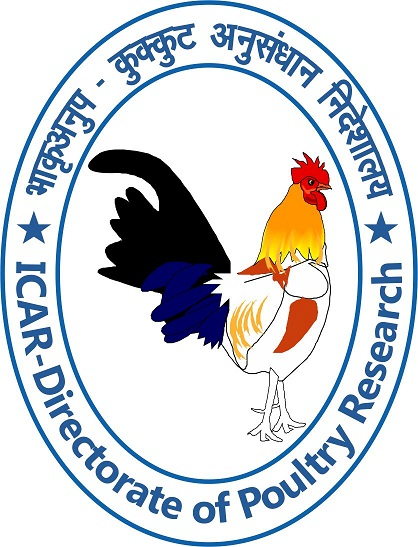The objective of this project during the initial years was to evolve a commercial strain capable of producing 200 standard sized eggs in 500 days (72 weeks), which received revisions during 1986, 1992 and 2000 to set higher targets of 250, 270, 290 and 300 eggs respectively. Subsequently the goal of 305 eggs was set in 2008. The target for egg size was fixed as 52 g at 40 weeks of age in the XXVII workshop. Layer populations were subjected to selective breeding through intra-population selection for egg production. The decline in egg size in these populations as well as in other stocks maintained at other AICRP centres prompted the need for the inclusion of egg weight also as independent culling level in the selection programme from third generation. Pure lines were selected for part record egg production to 280 days (40 weeks). The decline in residual egg production due to selection based on part-record egg production over several generations called for an upward alteration of testing period from 40 weeks to 60 weeks and to 64 weeks. Since then the selection is being carried out based on egg production to 64 weeks of age.
IWN strain
- The realized phenotypic response for egg production up to 40 weeks, egg weight at 40 weeks and ASM from S-1 generation was 64.09 eggs, 2.5g and -32.88 days respectively and that of 64 weeks EP from S-19 generation onwards was 30.37 eggs.
- Genetic response for 64 weeks egg production (S-19 to S-28) was 3.58 eggs.
- Age at sexual maturity decreased from 34±0.74 (S-1) to 139.01±0.68 (S-28) days.
- Hen housed egg production up to 40 weeks of age increased from 34±0.75 (S-1) to 122.43±0.73 (S-28) days and egg weight at 40 weeks maintained at 52.16±0.10 g.
- Hen housed 64 weeks EP increased from 00±0.19 (S-1) to 256.69±1.52 (S-28) eggs.
- Hen housed 72 weeks EP recorded was 309.63±1.78 during S-25 generation.
IWP strain
- The realized phenotypic response for egg production up to 40 weeks, egg weight at 40 weeks and ASM from S-1 generation was 56.84 eggs, -0.04g and -38.42 days respectively and that of 64 weeks EP from S-19 generation onwards was 24.76 eggs.
- Genetic response for 64 weeks egg production (S-19 to S-28) was 4.62 eggs per generation.
- Age at sexual maturity decreased from 07±0.70 (S-1) to 139.65±0.42 (S-28) days.
- Hen housed egg production up to 40 weeks of age increased from 05±0.77 (S-1) to 123.34±0.83 (S-28) days and egg weight at 40 weeks maintained at 51.46±0.11g.
- Hen housed 64 weeks EP increased from 30±0.22 (S-1) to 261.35±1.4 (S-28) eggs.
- Hen housed 72 weeks EP recorded was 297±1.51 during S-25 generation.
ILM90 (Athulya)
- Based on the pure line performance over the years, IWN strain was identified as male line and IWP as female line for the hybrid cross (N X P). This cross (ILM90) developed by Mannuthy centre has consistently exhibited excellent performance in the Random sample poultry performance tests conducted by the Government of India. In 1990, this hybrid was released for commercial exploitation in the name of ‘ILM90’ (Indian Layer Mannuthy-1990) also known as Athulya. This cross produced 303 eggs during 72 weeks period at farmer’s field.
- The performance of IWN x IWP cross at Random Sample Production Performance Test was almost at par to leading hybrids of India. Anand Agricultural University has released this strain cross as Anand Commercial Layer for commercial exploitation. Front line demonstration was also carried out during the year 2009-10 at farmer’s door to evaluate the performance of IWN x IWP cross v/s BV-300. During year 2009, PDP, Hyderabad has evaluated various crosses of different centres of A.I.C.R.P on poultry breeding. The results showed that IWN x IWP cross has best genetic potential for egg production (305 eggs) in comparison to other entries. Further, IWN x IWP cross stood first among all ten entries in 20th and 21st Random Sample Production Performance Tests at Gurgaon.
IWI, H, J and G strains
- The egg production to 40 weeks of age of the in G, H, I and J strains was observed as 101.89, 103.19, 99.54 and 101.56 eggs; which have improved by 47.69, 41.69, 41.94 & 39.46 eggs in G, H, I and J strains respectively over base population.
- The average response per generation on genetic and phenotypic scales covering S31 generations for egg production up to 64 weeks of age in IWH and IWI strains was 1.23±0.35 and 1.01±0.27 eggs per generation respectively.
- The response per generation on genetic and phenotypic scales covering S31 generations for egg production up to 64 weeks of age in IWI strain was 1.46±0.33 and 1.24±0.24 eggs per generation, respectively, over 32 generation.
- CARI-Priya, a high yielding white plumage Layer (298 eggs upto 72 weeks) Laying white shelled eggs of standard size.
IWD strain: The average genetic and phenotypic response per generation (last 13 generations) for egg production up to 64 weeks of age was 1.69 and 1.13 eggs respectively.
IWF strain: The average genetic and phenotypic response per generation (last 13 generations) for egg production up to 64 weeks of age was 0.51 and -0.06 eggs respectively.

